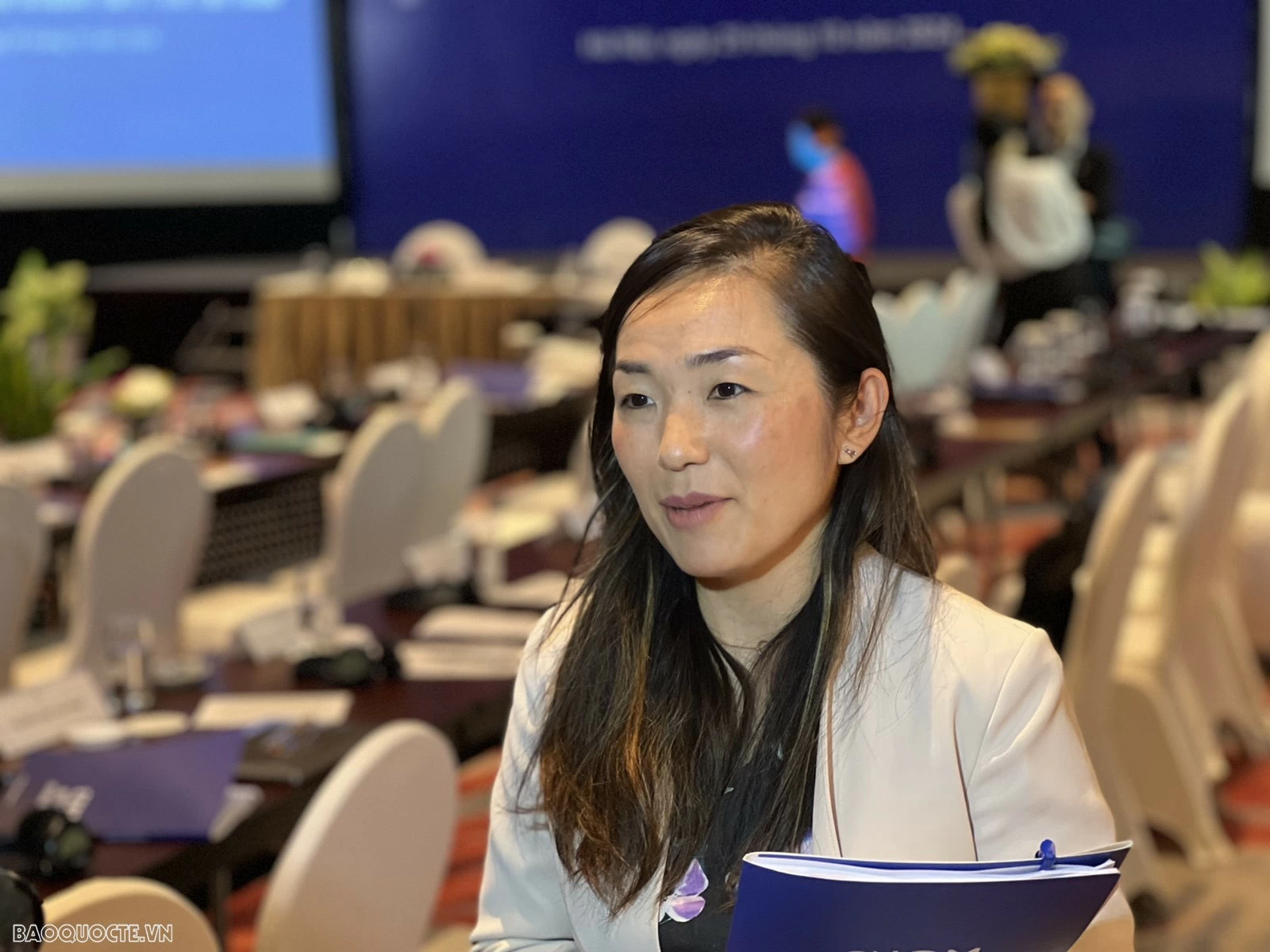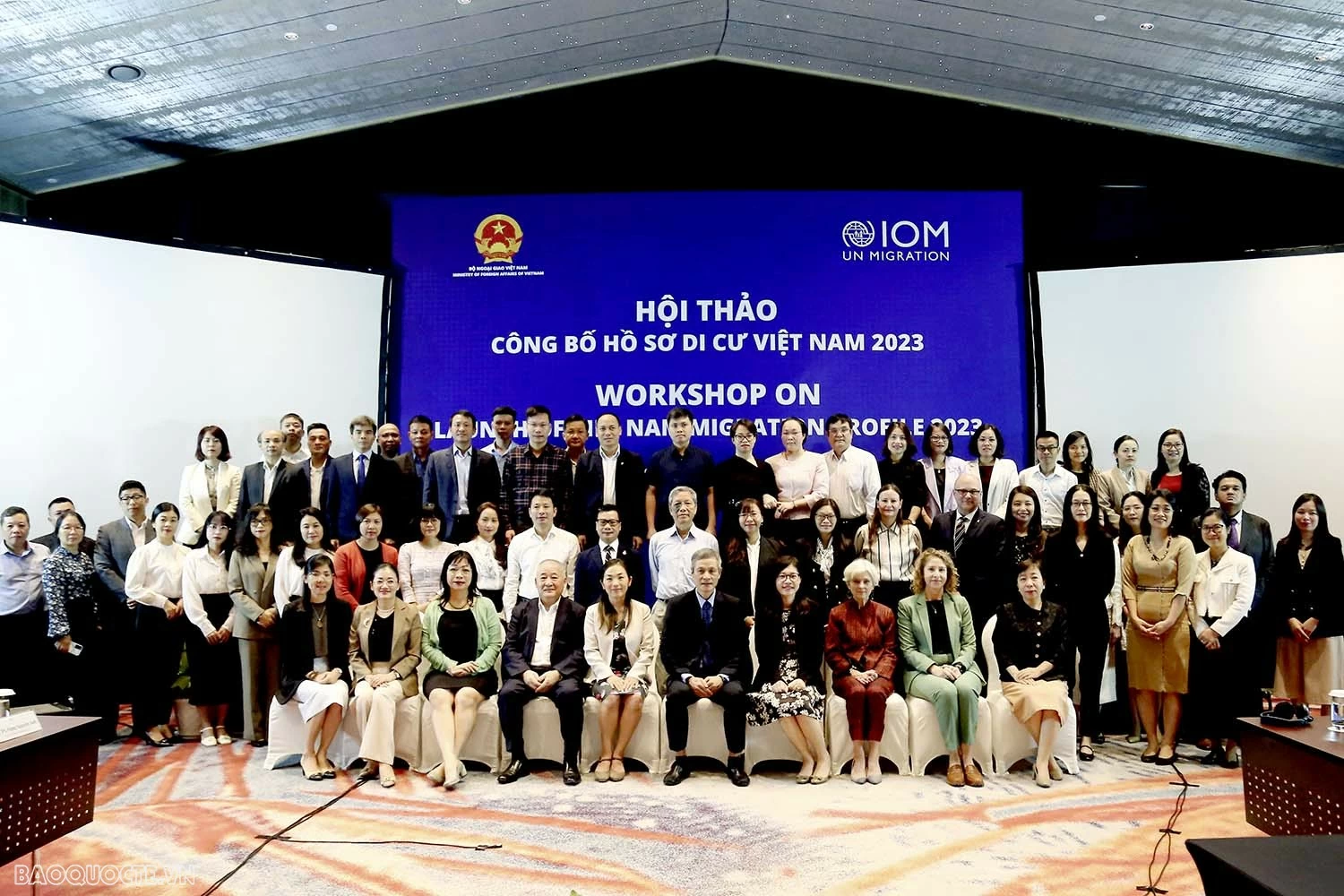
Vietnam Migration Profile 2023 reflects efforts to promote safe migration: Officer in Charge for IOM
Latest
 |
| Ms. Mitsue Pembroke, Officer in Charge for IOM, interviewed on the sidelines of the workshop. (Photo: Thu Trang) |
On the sidelines of the Vietnam Migration Profile 2023’s launching workshop on October 29th in Hanoi, Ms. Mitsue Pembroke, Officer in Charge of the International Organization for Migration (IOM), spoke with The World and Vietnam Report about the cooperation between IOM and the Vietnamese Government to ensure the rights of migrants.
The Vietnam Migration Profile 2023 was compiled by the Consular Department under the Ministry of Foreign Affairs, with contributions from various agencies. It is a part of the project “Supporting Evidence-Based Policy and Programmes in the Context of Cross-Border Mobility in Vietnam”, which was implemented by the Ministry of Foreign Affairs and IOM with funding from the IOM Development Fund (IDF). How do you assess the significance of the publication of this profile?
The publication of the Vietnam Migration Profile 2023 holds immense significance. Over the years, starting from the first Vietnam Migration Profile in 2011, followed by another in 2016, and now in 2023, we have witnessed the deepening and broadening growth of migration-related policies in Vietnam. This document highlights the Vietnamese Government’s concrete achievements in policy planning to support and protect migrant rights.
As a partner of the Vietnamese Government, IOM greatly appreciates these efforts in drafting and developing the Migration Profile. We are confident that the Vietnam Migration Profile 2023 will be crucial in facilitating safe migration, helping Vietnam advance further in implementing the GCM and solidifying its standing as a leader in this endeavor.
Given the ongoing growth and acceleration of international migration, what challenges and risks do migrant workers commonly face today when working abroad?
Migrant workers face diverse challenges depending on the context and country. For example, in destination or transit countries, migrant workers may fall victim to labour exploitation, and sometimes their identification documents are confiscated, trapping them in exploitative situations and causing immense psychological and material struggle. This is one of the primary risks migrant workers often encounter.
 |
| Delegates attend the workshop on the Launching of the Vietnam Migration Profile 2023 on October 29th in Hanoi. (Photo: Quang Hoa) |
What knowledge and skills should migrant workers equip themselves with to mitigate these risks?
One way IOM assists migrant workers in minimizing migration risks is by imparting basic skills and raising awareness about their rights and essential information needed when working abroad.
Today, most migrant workers are young, tech-savvy, and active on social media. This is why we are using social media to disseminate information on safe migration. For instance, our project “Think Before You Go” helps young migrants foresee the potential risks of different migration means, as well as understand the benefits and access vital information during their migration.
Another initiative we are implementing involves promoting inter-agency cooperation. IOM collaborates not only with the Ministry of Foreign Affairs but also with the Ministry of Public Security, Ministry of Labour - Invalids and Social Affairs, as well as other ministries, government agencies, and non-governmental partners to create a network for comprehensive efforts to benefit migrants before they embark on their journeys and to assist in rescuing those who fall into trafficking traps.
The most striking example of this inter-agency cooperation is the successful joint efforts with the Vietnamese Government and non-governmental organizations in rescuing several trafficking victims in Cambodia.
Thank you!
| Migration Profiles were proposed by the European Commission (EC) in 2005 to develop support programs in migration and poverty alleviation strategies for developing countries. IOM piloted Migration Profiles in 2006, and within five years, approximately 70 countries had adopted and developed them. The primary aim of Migration Profiles is to assess migration conditions; deepen understanding of the migration-development nexus; evaluate the impact of migration on socio-economic development; and support governments in establishing or enhancing mechanisms for gathering migration trends. They also aim to improve the use of migration information in policy planning, and promote inter-agency cooperation, especially in data collection and policy development. Thus, Migration Profiles serve as a crucial tool to enhance policy coherence, foster evidence-based policy-making, and incorporate migration issues into development plans. Developing Migration Profiles has also become a formal recommendation within the GCM. Objective 1 of the GCM calls on nations to "collect and utilize accurate and disaggregated data as a basis for evidence-based policies," urging countries to periodically develop Migration Profiles. Recognizing the importance of migration data and Migration Profiles in migration management and policy formulation, Vietnam partnered with IOM in 2011 to develop the first edition, titled “Review of Vietnamese Migration Abroad.” This was followed by the Vietnam Migration Profile in 2016 and, most recently, in 2023. |












